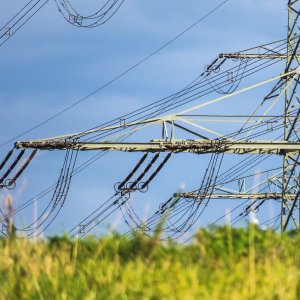Reminders of the Importance of the Hydroelectric Sector

STORY INLINE POST
Q: Which changes to Mexico’s operating framework have the greatest impact on the Mexican hydropower sector?
A: Mexico has a great potential for hydroelectric projects. The Energy Reform is going to make the private sector feel more comfortable about not being limited to participation through self-supply schemes only. We are going to start seeing generators that will be able to provide electricity directly to CFE. This will create a lot of opportunities since the self-supply scheme is limited because of the limited availability of bankable PPA off-takers. The Energy Reform is opening up opportunities to the renewable energy developers.
Q: Which role should hydropower play in the national energy strategy?
A: Without hydroelectric projects, Mexico will never be able to comply with its target of generating 35% of its energy from renewables by 2024. Right now, hydroelectric power makes up over 16% of installed capacity, but the government is not giving the hydropower industry the importance it deserves. Hydropower can be generated the moment when electricity is required, which means it offers flexibility to produce more electricity during peak demand hours. Solar and wind power are generated whenever there is wind or sun. Although hydropower is much more developed and provides greater local economic benefits than wind or solar, these renewable energy sources receive a lot more attention in Mexico. When a wind farm is developed, 70% of the investment goes to imported turbines and related technology, while 30% goes to infrastructure, construction and salaries. The opposite is the case for hydropower development, where 70% of the investment stays in Mexico, providing economic local benefits and creating jobs.
Q: What are the challenges the hydroelectric sector is facing today, and what is AMEH doing to enhance the operating framework?
A: One of the most important elements is that, after three years of debate, the law has been changed and no longer limits small hydroelectric projects to 30MW. If you consider the potential of hydroelectric projects below 30MW, this add up to around 1GW. Now that we can consider larger projects, there is a 36GW potential capacity that could be installed in Mexico. This offers important investment opportunities. Many of Mexico’s rivers cannot be used for any purpose, as established by presidential decree 70 years ago. There is no sense in preventing people from using the water from these rivers since hydroelectric projects do not deplete water bodies. This law has been changed, and it is possible to obtain a permit to generate power and a license from CONAGUA to build a project without the need for a concession. However, we still have to make a bigger effort to further change the legislation; we need a presidential decree to eliminate river closures for renewable projects.
The Peña Nieto administration has done a great job putting together the National Development Plan. In crafting it, they put together roundtables on renewable energy and created the Consultative Council on Renewable Energies, on which our association has a seat. We are not only working closely with the federal government, but also with CONAGUA, CRE, CFE and SEMARNAT, who are asking for our input on the development of the operating framework and are recognizing the importance of hydropower. CFE states that renewables are not reliable because when you install 5GW of wind power, you need to have 5GW of backup fossil fuel based generation capacity for moments when wind farms are not producing sufficient energy. Hydropower can be used to generate electricity whenever necessary and can be used to stabilize the grid.
Q: What are the opportunities to use existing infrastructure for future hydropower projects?
A: Ideally, existing infrastructure can be used without altering or affecting the surroundings. By using the water that was already being used for irrigation and switching the valve for turbines, there is barely any environmental impact. It is definitely possible to use CONAGUA’s existing irrigation dams, which entails lower infrastructure investment, but the problem is that there may not be a nearby CFE substation to facilitate interconnection to the grid. This means that a long distance power line might be necessary to get to the nearest substation, but having to make this expenditure to produce 3MW might not be worth the investment.






















